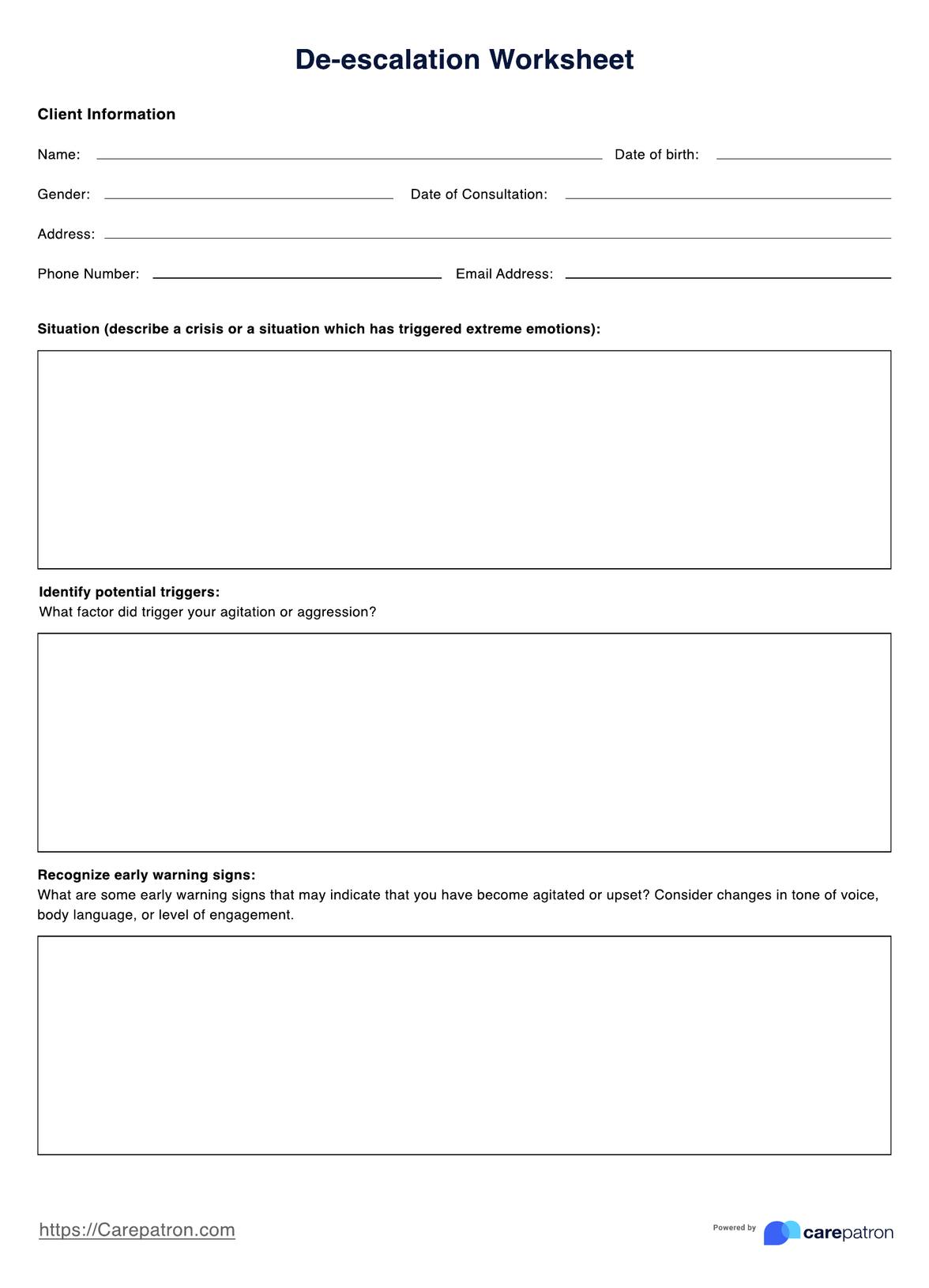De-escalation worksheets can be used when a patient or client exhibits challenging behaviors or may be at risk of agitation or aggression. This could include conditions where a patient is experiencing a mental health crisis, has a history of violence, or is otherwise exhibiting disruptive behaviors.

De-Escalation Worksheet
A de-escalation worksheet is a structured tool healthcare providers use to manage challenging patient behaviors. Learn more about its benefits. Download this PDF now!
De-Escalation Worksheet Template
Commonly asked questions
To use a de-escalation worksheet, providers should familiarize themselves with its content and structure. They should then use the worksheet to guide their interactions with patients or clients, focusing on identifying triggers, using effective communication strategies, and promoting a calm and safe environment. Providers should also document any relevant information related to the de-escalation event, such as the patient's behaviors, interventions used, and outcomes.
Yes, many types of de-escalation worksheets are available, each with a unique approach and content. Some worksheets may be tailored to specific patient populations, such as children or elderly patients. In contrast, others may focus on particular behaviors or settings, such as aggression in the emergency department. Providers should choose a de-escalation worksheet that best suits their needs and the needs of their patients or clients.
EHR and practice management software
Get started for free
*No credit card required
Free
$0/usd
Unlimited clients
Telehealth
1GB of storage
Client portal text
Automated billing and online payments











